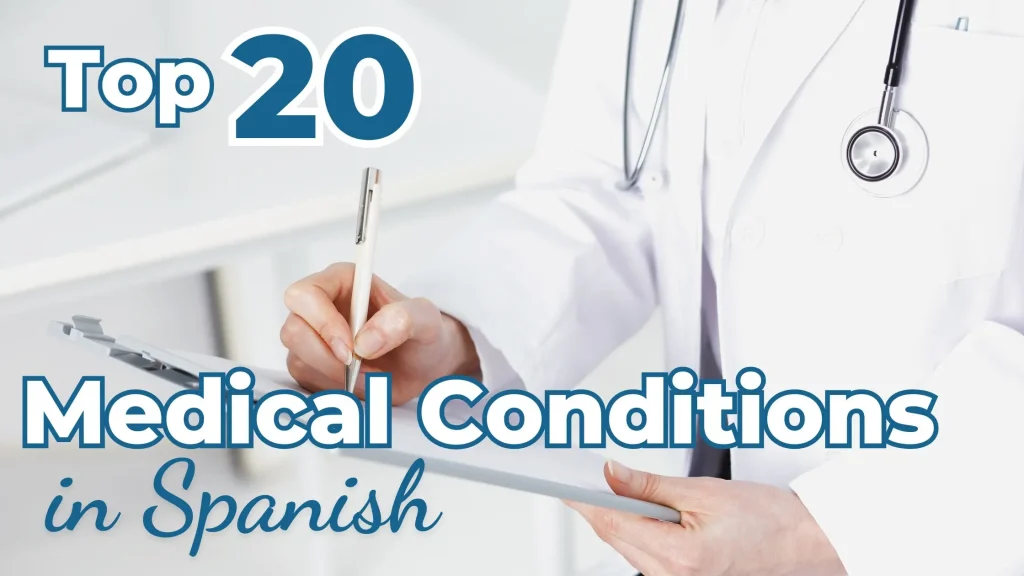A brief discussion on the responsible use of medical Spanish from our Facebook group:
It’s tempting to assume that your medical Spanish is “good enough”…
The fact that you can “get by” with Spanish in social contexts doesn’t necessarily mean that you should be relying exclusively on yourself with your Spanish-only patients.
Unless you’ve spent some time digging into proper medical terminology and some standard ways of phrasing basic medical history questions in Spanish, chances are you’re not being as responsible with medical Spanish as you could be. The degree of your medical Spanish shortcomings will depend on how conversational you already are. For the sake of your patients and your personal liabilities, it would be a good idea to give your current level of medical Spanish proficiency some thought.
A recent article published in the Journal of the American Medical Association titled Appropriate Use of Non-English-Language Skills in Clinical Care (Regenstein M, Andres E, Wynia M. January 9, 2013 – Vol 309, No. 2) discussed this topic and emphasized that many clinicians overestimate their own ability to use a second language. They highlight several warning signs that your knowledge and use of a 2nd language is insufficient as a stand-alone for direct patient care.
We agree that many people overestimate their ability to use a foreign language in the clinical setting, and that some caution is wise. Below are 3 warning signs that you probably need a medical Spanish terminology tune-up – and some immediate help with your Spanish-only patient:
- Word Finding: Normal communication is a relatively fluid exchange of ideas among people. You probably need to examine your proficiency level if, when you are speaking Spanish with your patients, your exchange is choppy or slow and you have a hard time thinking of the right words. If you speak slowly because you are choosing your words intentionally this is usually a good thing when communicating important information. However, if you’re struggling to find the right words to express yourself, the odds are that you’re changing the message you originally wanted to communicate. In English, you’ve grown used to expressing messages in certain ways; so if you find yourself searching for words with your patients you probably need to study up on how to best express those important ideas in Spanish.
- Not Rephrasing: Rephrasing in this context refers to the process of explaining a complicated concept to someone. The speaker (the medical provider in this case) starts with expressing the concept in a way that they think is most clear and understandable. If the listener (the patient) expresses confusion, the speaker will rephrase the idea. Rephrasing in a 2nd language requires a good command of synonyms and the ability to talk around a specific point (circumlocution). If you find yourself repeating the same thing over and over without really changing how you say it, this is a clear sign that you need to improve your medical Spanish .
Of course, industry specific Spanish and English language training is the heart and soul of Common Ground International. When it comes to clinical interactions, plenty of research has documented the value of the healthcare team being able to speak the patient’s language. As a matter of fact, we’ve also advocated the Case for “Practicing” Medical Spanish With Your Patients – so don’t misunderstand these medical Spanish red flags as a “be fluent or don’t speak” approach. Regardless of your role with patients, you can use your Spanish responsibly.
You might consider improving your Spanish as well. Each of the 3 red flags above can be addressed and overcome by a motivated student. We’d love to help you improve your Medical Spanish skills – here are a few actionable ways for you to keep moving forward with your Spanish:
- Get our Spanish app and activate the Quizlet feature to study all of our Medical Spanish vocabulary right on your mobile device. Your total cost will be $5.98 ($4.99 for the app and $0.99 to activate Quizlet) – and you’ll have open access to all of Common Ground’s medical Spanish flashcards. Not only that, but you’ll get a great grammar reference, a good dictionary that is growing daily, and access to some reading and listening comprehension activities.
- Join a Medical Spanish class in Colorado. Our winter 2014 schedule is taking shape and we’ll be offering Beginning – Intermediate level Medical Spanish classes throughout the Denver area.
- Consider an online Spanish tutor. We’ve been building our network of online tutors in Central America who are excited to work with you online. These classes are fantastic if you need to work on your comprehension skills. The best way to get this rolling is to take our online placement test so that we can make sure you’re a good candidate for the online tutoring format.
- Join us on our Medical Spanish immersion programs in Costa Rica. We have February & July programs in 2014 and we’d love to have you join us.
Thanks for reading and thanks for being responsible with your patients.
Ps. If you’re working on learning Spanish for your healthcare career, we have the medical Spanish you need!





